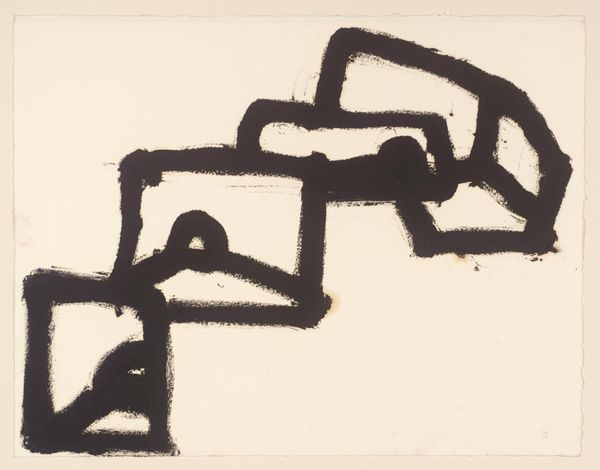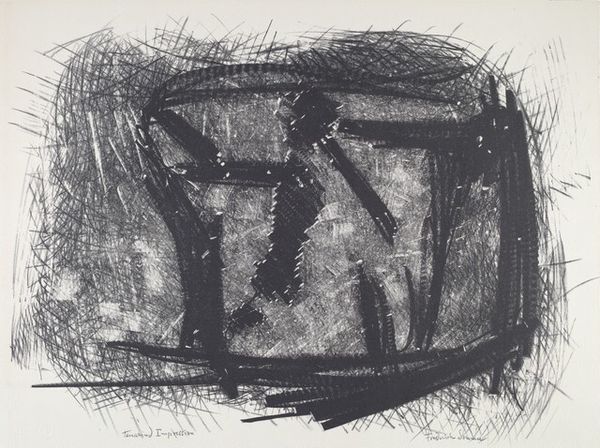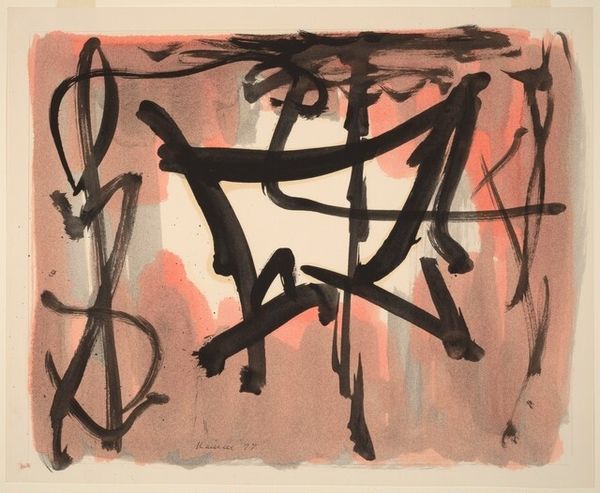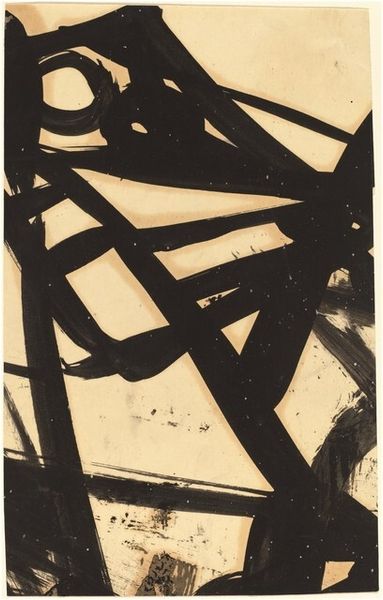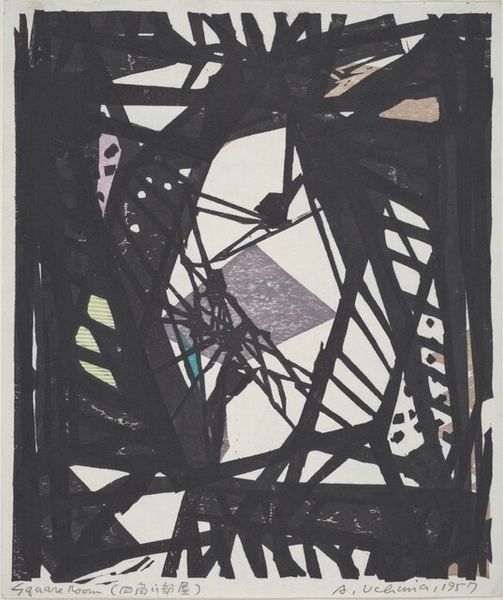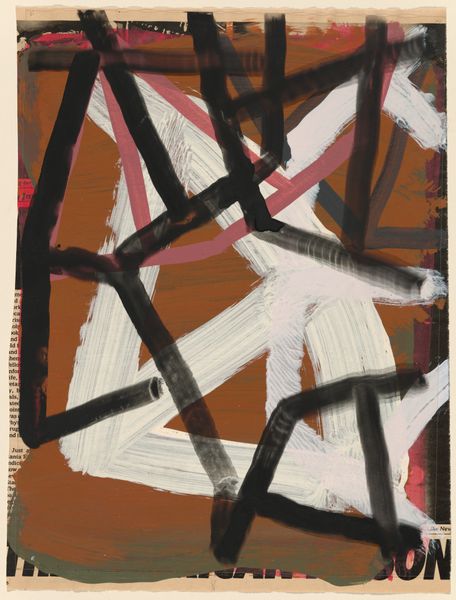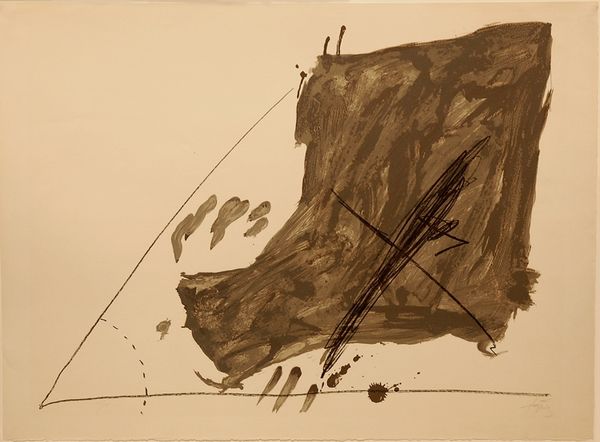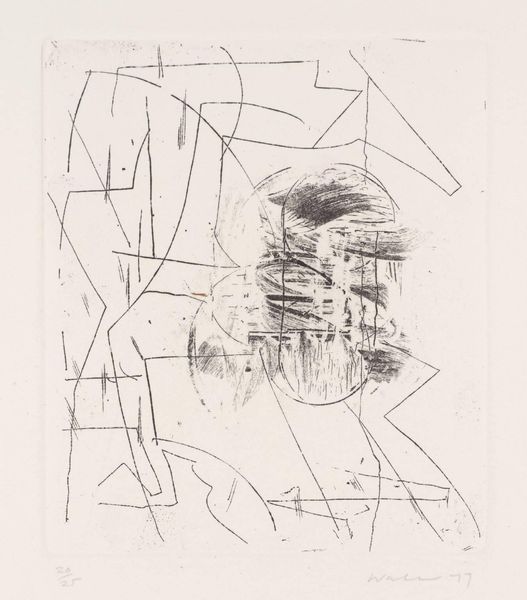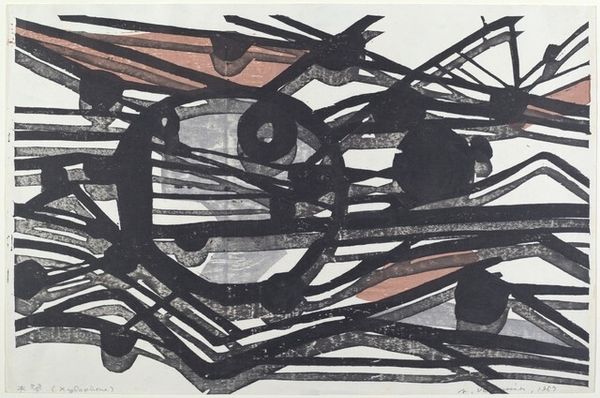
drawing, paper, ink
#
abstract-expressionism
#
drawing
#
paper
#
ink
#
geometric
#
abstraction
#
line
Dimensions: overall (irregular): 23 x 30.3 cm (9 1/16 x 11 15/16 in.)
Copyright: National Gallery of Art: CC0 1.0
Curator: Standing before this stark image, I immediately feel the energy. The bold black lines crisscrossing on the tan paper—it’s so raw, so immediate. It almost feels…violent? Editor: Well, yes, there’s a certain visual aggression to it. What you’re reacting to, I think, is the dynamic visual vocabulary that Franz Kline deployed so powerfully. This “Untitled” piece from around 1950 is ink on paper, embodying that classic Abstract Expressionist spirit. You can almost see the artist’s hand moving quickly, spontaneously. Curator: Spontaneously, but also…deliberately, right? The way those lines intersect creates a sense of depth, of a structure half-formed. Like scaffolding for some immense, never-to-be-built monument. Editor: Precisely! Kline was deeply immersed in the postwar aesthetic and that sense of possibility—or lack thereof, as you hint. His work often reflects this duality, particularly when we see how gestural abstraction developed in relation to anxieties and changes in society. Curator: And it makes me wonder about scale, doesn't it? The boldness suggests something massive, but it’s just on paper. This tiny drawing possesses this tremendous energy. Did that tension interest Kline, do you think? The miniature versus the monumental? Editor: I’d argue he was consciously dismantling the hierarchy. The large canvases are powerful because we imagine the movement. In this piece, there's immediacy that brings something from large painting scales into smaller, more intimate drawings. Consider that the act of exhibiting such art disrupts traditional exhibition norms, influencing viewers’ access to abstract concepts. Curator: True. Ultimately, though, I get lost in the emotion. It feels deeply human. That's abstraction’s allure. To be able to communicate so much, without having to explicitly define anything… Editor: Exactly. It bypasses the logical and strikes something much more fundamental within us. Thank you for shedding light on those visceral encounters, the work invites continued examination and new appreciation. Curator: My pleasure! It’s fascinating how art constantly challenges our perspectives. It forces a response whether we want to offer one or not.
Comments
No comments
Be the first to comment and join the conversation on the ultimate creative platform.
